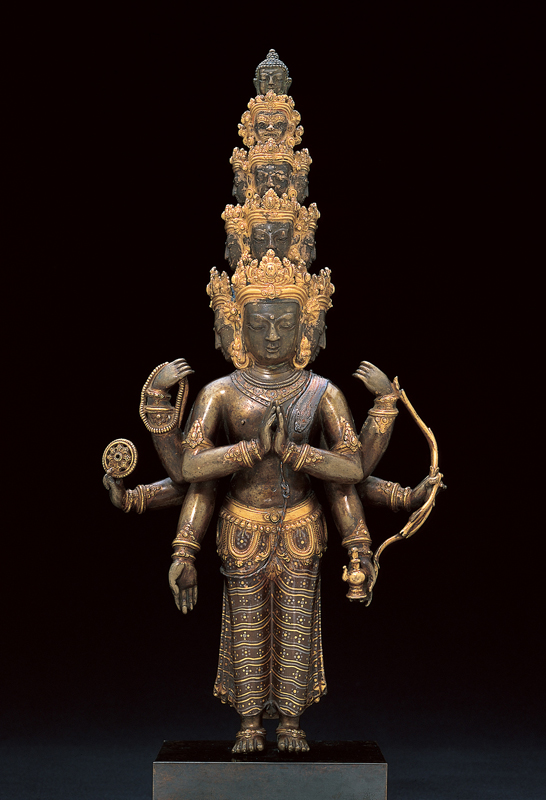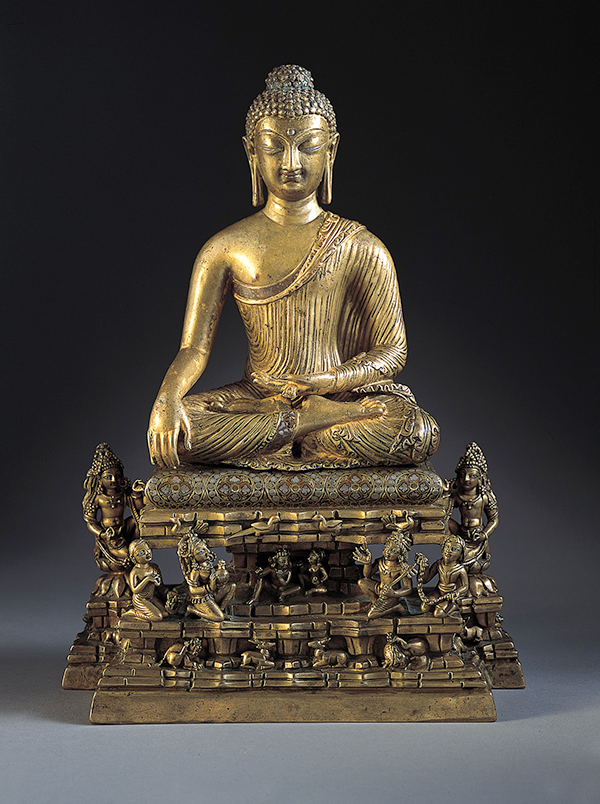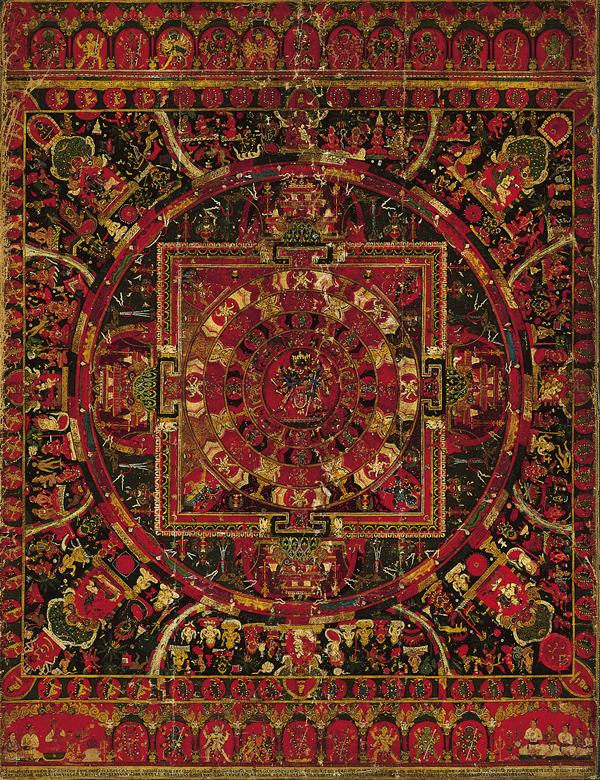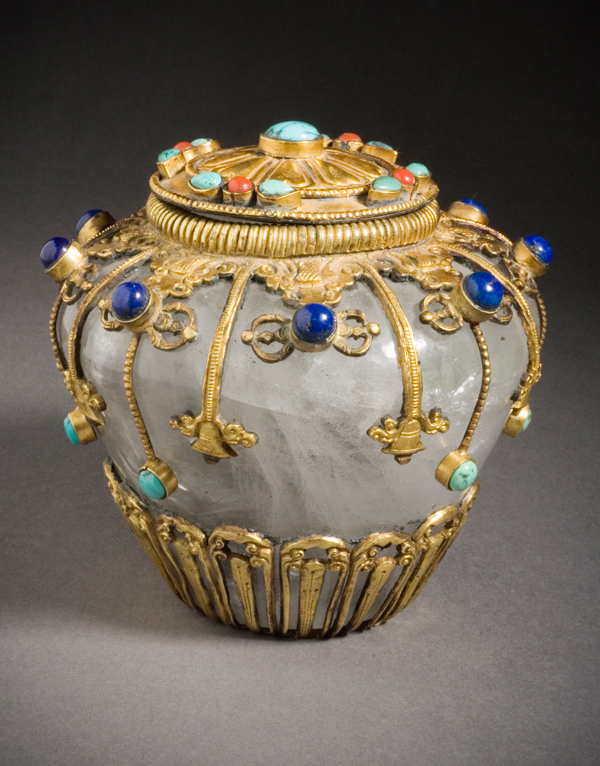In the Land of Snow is the Museum’s first large-scale exhibition of Himalayan Buddhist art, bringing together exceptional Indian, Nepalese and Tibetan Buddhist sculptures along with significant thangka (flat field) paintings from throughout the Himalayan region. Almost all of the Museum’s thangkas are on display for this special occasion, in addition to a number of generous loans. A highlight of the exhibition is the display of a monumental thangka, measuring over 20 feet in height, depicting the Buddha of the Future, Maitreya, flanked by the Eighth Dalai Lama, Jamphel Gyatso, and his tutor, Yongtsin Yeshe Gyaltsen. Constructed of appliqued silk and presented on an elaborate mounting, the thangka was commissioned by the Eighth Dalai Lama for the benefit of his tutor and for the posterity of the Buddhist faith. This is only the second time that this extraordinary painting has been on view at the Museum.
In the Land of Snow explores many facets of Himalayan Buddhist art, including the transmission of Vajrayana Buddhism—from its place of origin in India to its eventual sites of practice in Nepal and Tibet—through the examination of iconic sculptures of the Buddha and of Buddhist deities. Although it is not known when Vajrayana Buddhism first developed, by the seventh century it had become firmly established in India and was taught in the major Buddhist centers and universities. Also known as the “diamond vehicle” because it promised the expedience of enlightenment within a single lifetime, Vajrayana Buddhism appealed to Buddhist rulers and practitioners throughout Asia. Monks from Nepal and Tibet traveled to Buddhist universities in eastern India, such as Nalanda. It was at such monastic universities that Vajrayana techniques and practices were taught and art was made and seen. Monks returned with their new knowledge, influencing the teachings, iconography and aesthetics of Buddhism and Buddhist art at home. SHOW MORE
Such scholar-monks, also known as great adepts (mahasiddha), were very important to the spread and longevity of Vajrayana Buddhism. Unlike other Buddhist traditions, Vajrayana places great emphasis on the pupil–guru relationship. Highly secretive esoteric rituals and complex meditative yogic exercises cannot be learned from texts alone. They require the aid of a skilled and knowledgeable teacher. Famous teachers were immortalized in art and worshiped alongside images of Buddhist deities and the various Buddhas within the Vajrayana pantheon. Accordingly, the exhibition includes paintings and sculptures of important teachers, Buddhist deities and Buddhas in the history of Vajrayana Buddhism. Great adepts such as Padmasambhava, along with such fierce and benign Buddhist deities as Mahakala and Green Tara, respectively, will be on display.
By the thirteenth century, Buddhism had ceased to be a major religion in India; new centers of Vajrayana Buddhism became established in Nepal and Tibet. The eighth-century Chakrasamvara Tantra (Circle of Bliss), of which the Museum has a fine seventeenth-century Nepalese example, was once understood to be embedded in the landscape of India; however, after the fall of Buddhism there, the Nepalese and Tibetans transferred Chakrasamvara pilgrimage sites to their own terrains. The Chakrasamvara Mandala and others like it were painted on thangkas as “flat field” paintings to aid practitioners in their meditative practice. Skillful practitioners are able to imagine such two-dimensional renderings as complex metaphysical visualizations. By meditating on the mandala, understood as a cosmic diagram of the universe, adepts are able to visualize themselves in a “pure land” and attain Buddhahood. In addition to mandala paintings, ritual implements that aid practitioners in their quest for enlightenment are also displayed.
In the Land of Snow affords visitors the opportunity to examine works normally not on view at the Norton Simon Museum, while also learning more about the Buddhist arts and cultures of the Himalayas. The exhibition is on view in the Museum’s special exhibitions gallery on the lower level from March 28 through August 25, 2014. SHOW LESS





